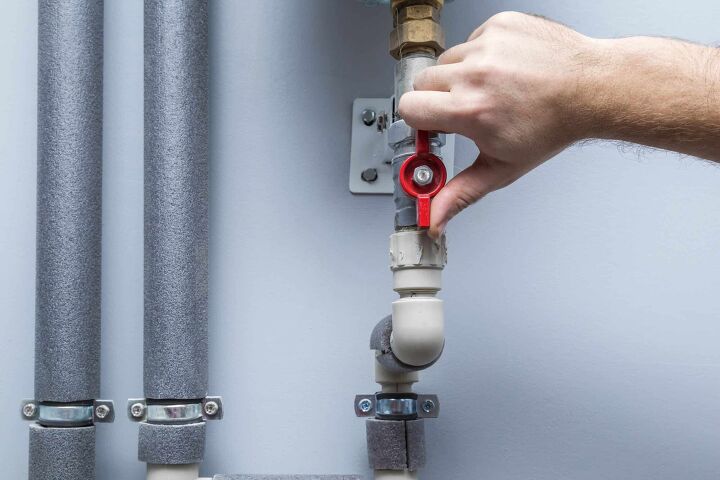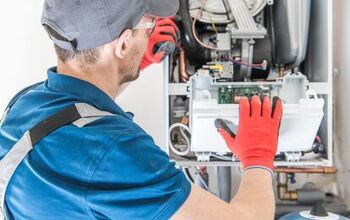How Do I Know If My Water Pressure Regulator Is Bad?

Water pressure regulators are an essential part of our plumbing systems. These devices help to bring the pressure of the water to a safe level. Most pressure reducing valves have a life expectancy of 10 to 15 years.
However, some can malfunction just a few years after installation. Some can even last for 20 years or more. The vital information to know here is how you can tell if your water pressure regulator is bad.
You can tell that your water pressure regulator is bad if the pressure is too low or high or you find leaks. Noises inside of your walls can also indicate that something is wrong with your water pressure regulator. Check your landscaping for mysterious puddles of water which can indicate that your pressure regulator is bad.
If you have any of these issues, it may be time to replace your water pressure regulator. In this article, we will explain the signs of a bad water pressure valve in depth. Also, we will provide you with instructions on how you can fix it yourself.
Do You Need to Hire a Plumber?
Get free, zero-commitment quotes from pro contractors near you.

Weakening Water Pressure
There are a few different scenarios that let you know your water pressure is diminishing. One of those is when you turn the faucet on only to be met with a weak stream of water. Sometimes, it’s not so bad. However, other times, there’s not enough water to wash your hands.
If you find that the water works fine when one faucet is on, that’s great! Except, if two running two faucets causes a decrease in pressure—there’s a problem. That problem is most likely your water pressure regulator.
Weakening water pressure can happen in various places throughout your home:
- Bathroom/Kitchen faucet
- Washing machine water intake faucet
- Dishwasher
- Garden Hose
- Shower and bath faucets.
There very well could be weak pressure in one area of the house and not the other.
Noises and Vibrations in the Walls
Noises and vibrations in your walls are common with pressure regulator issues. However, they’re also common with a slew of other problems too.
So, how do you know for sure that the noise is due to your water pressure reducing valve? A few questions to ask yourself when you hear these vibrations in your walls:
- Is the noise coming from where the valve is located?
- Does operating different fixtures make the noise worse?
- Do I have any of the signs of my pressure regulator going bad?
If you’ve answered yes to any of these, the chances are that this is indeed your problem.
Other things can cause noises in your wall as well, such as improperly strapped pipes. That is why it is essential to compare the sounds to the functions of your water systems. Flush a toilet or turn on a faucet and listen.
High Water Pressure
Have you ever turned your sink on, and had the water pressure hurt your hands? Or, perhaps the water splashes violently against the sink, and water gets all over. You may also have water leaking out of the handles surrounding your faucet, even when shut off. This is a strong indication that the components of the faucet have begun to wear down under the stress of high pressure.
In fact, all of the aforementioned situations are all common signs of high water pressure. The uncontrolled high pressure will damage your appliances. You may find that you are frequently repairing your faucets and toilets. It would cost you a lot less money to fix your pressure regulator than to continue replacing these appliances.
If you get spurts of high water pressure and experience water hammers, think about installing a water hammer arrestor.
Mysterious Puddles in the Landscaping or Around the House
If you see a little puddle in your flowerbed that wasn’t due to rain, it may be a leak from your pressure regulator. This can also occur at any point around your house, depending on where your valve is located.
It is also common for pressure regulating valves to be in other areas of the house, such as:
- Laundry rooms
- Garages
- Under the stairs
- Pantries
- Closets
Therefore, a leak under your stairs, or in a pantry may be an indication as well.
Plumbing Leaks
In addition to leaks where your pressure regulating valves are located, you could have general plumbing leaks anywhere in your house. When the pressure in your pipes is too high, a considerable amount of strain is placed on the pipes and the joints holding them together.
All of this pressure can have negative effects on the weak points in your plumbing. Once the pressure becomes too much, these weak spots will give way, resulting in a leak. While most plumbing leaks are small, this makes it very difficult to find them and they can really wreak havoc on your home.
No Water Pressure
You’re turning on your sink, but there’s no water coming out. Or, perhaps it’s just an exceedingly small stream dripping out. This means there is no water pressure, and the issue is most likely your water pressure regulator.
Now, if your cold water works great but hot water doesn’t run, that’s a different problem. You may have an issue with the water heater, or the faucet itself.
Water Pressure Regulator Replacement: Do It Yourself
If you’re uncomfortable replacing the regulator yourself, you can always hire a professional. Although, you will save a couple of hundred dollars if you do it yourself.
Replacement Cost of Water Pressure Regulator | |
Professional | $250 to $350 |
DIY | $45 – $60 |
Parts cost between $45 and $60. When you pay a professional to do it, you are paying nearly $200 to $300 in labor fees.
While this is an involved project, it’s rather easy to do. You can replace your regulator in six easy steps.
Basic DIY Instructions on Replacing a Water Pressure Regulator
1. Find the Location of Your Pressure Regulator Valve
Often, you can find these where your main water line enters the house. You can find it after the main shut off valve. The location is convenient so that you can turn the water off quickly when the valve needs replaced.
2. Measure Your Water Pressure
You can buy a pressure gauge from any home improvement store. The gauges run about $10.
Go outside and connect it to your spigot to measure the pressure for a baseline reading. If that doesn’t work, ask to measure your neighbors or a friend within the same vicinity.
Normal water pressure runs between 40 PSI and 60 PSI. The average home has a PSI of 50. If, for some reason, you cannot get a baseline number, that’s okay! You can set your PSI to 50 after you replace your regulator valve.
3. Shut Off Your Water Supply
Next, you will want to shut off the main water supply and drain your pipes. To drain your pipes, you turn the faucet on after the main water line is turned off. This will let your faucet drip out the rest of what is left.
It’s a good idea to turn the faucets on that are the farthest away from where you’re working. That way, the water will be drawn away from you. Less water in your area means less mess to clean.
4. Position the Valve
The valve will have markings on it that show the direction the water is flowing. You need to make sure you install this facing the correct direction. Failing to install it properly will not reduce the water pressure.
5. Pressure Regulator Installation
Installing a water pressure regulator includes several steps, such as:
- Cutaway 6-inches of your pipe after the main shutoff valve
- Soldering on your fittings around the exposed end of the pipe
- Insert your valve into the gap.
- Tighten your valve onto the fittings with a set of pliers
Each setup is different, so you will need to find the correct location to do all of this. Also, water pressure regulators come with installation instructions. Be sure to read these instructions to ensure you do the job correctly.
6. Set Your Preferred Pressure
It’s time to turn your water back on. Now, you can take another pressure reading. If it is not kin to your liking, adjust it using the screw at the top of your regulator.
Related Questions
Is 70 PSI too High for Water Pressure?
The short answer is no, 70 PSI is not too high for water pressure. You will violate code if you are above 80. If you like the water pressure high, shoot for a reading between 60 PSI and 70 PSI.
Why is my Water Pressure Regulator Leaking?
Over time, your gaskets will deteriorate. These gaskets form an air-tight seal against the metal parts in the regulator. When the valve leaks, it’s a sign that you may need a new one.
Do You Need to Hire a Plumber?
Get free, zero-commitment quotes from pro contractors near you.

Listen to What Your House is Telling You
Houses can talk! Maybe not in the same what that humans do but, whether you pay attention or not, your home is going to speak. Water pressure issues, odd noises in the walls—your house is telling you that something is wrong.
Rather than waiting for more damage to occur, it’s better just to get the job done as quickly as possible, either by handling it yourself or by hiring a professional. Both your home and your wallet will thank you!

Heather is a passionate writer who loves anything DIY. Growing up, she learned everything from home repairs to design, and wants to share her tips with you. When she's not writing, she's usually hiking or searching for her next DIY project.
More by Heather Robbins



























